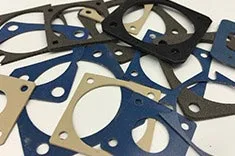EMI Shielding Products
- Custom Gasket Fabrication
- Connector Gaskets
- Bonded O Ring
- Custom Gaskets
- Conduct-O-Knit Knitted Wire Mesh
- Conduct-O-Seal Combo Gasket
- Conduct-O-Elastomer
- Conduct-O-Seal Oriented Wire in Silicone Gasket Material
- Conduct-O-Mesh Tape
- Conduct-O-Foam
- Conduct-O-Bond
- Optical Filters For Electronic Displays
- Shielded Vent Panels
- ESC Board Level Shielding
- 300 Series
Choosing Between Metal and Plastic Enclosures
RFI and EMI are all around us, in both natural and human-made forms. Both types of interference do not affect humans, and in fact, human beings can not even detect these waves without specialized equipment. Although they do not harm humans, the same cannot be said for electronic devices.

All electronic devices, big and small, generate some levels of electromagnetic waves. These waves can interrupt the performance of surrounding electronics (sometimes resulting in total failure of the device). Interference happens internally (if there are two circuits in one product) or externally (from a nearby electronic device).
To protect devices, engineers commonly turn to EMI and RFI shielding. It is possible to reduce EMI through design, but in specific case, EMI cannot be reduced enough to meet various EMI-RFI standards. EMI shielding protects devices that cannot defend themselves.
When creating shields, engineers have material options. Enclosures made from highly conductive materials (aluminum, copper, or silver) are ideal for shielding because that provides a natural barrier. This option is not always the most cost-effective route for designers.
EMI RFI Shielding
Plastic enclosures enhance the electromagnetic compatibility of electronic devices. Shield coatings easily reflect interferences while also providing protection for electronics. Plastic is an affordable option.
Related Reading
- Tips for Choosing Shielding MaterialsEMI and RFI shielding are essential components of modern-day electronics. There is no electronic device on the markets, whether it is a navigation system or a medical device that isn’t directly affected by EMI.
- How do EMI Shields Work?
- Using EMI-RFI Shielding Gaskets and Filters



